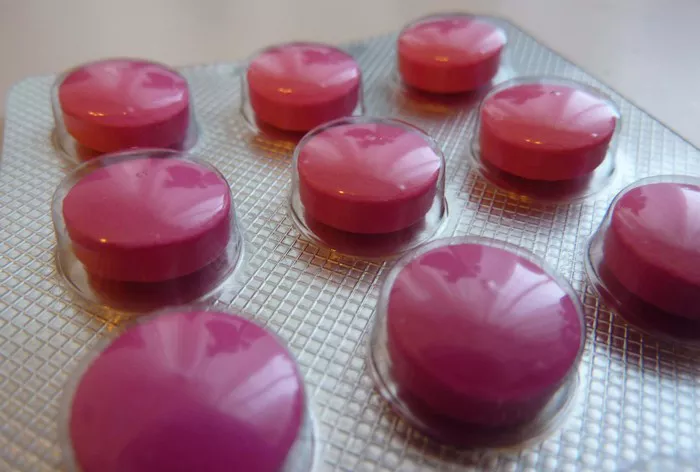Dermaplaning is a popular at-home skincare treatment that involves using a scalpel-like tool to gently exfoliate the skin and remove fine vellus hair, also known as peach fuzz. This procedure can leave your skin looking smoother, brighter, and more youthful. However, it’s crucial to take proper care of your skin after dermaplaning to ensure its health and maintain the results. In this article, we will discuss what products and treatments are best to use after dermaplaning at home.
Understanding the Skin After Dermaplaning
Before diving into the products, it’s important to understand the state of your skin after dermaplaning. When you dermaplane, you are essentially removing the top layer of dead skin cells and fine hair. This leaves your skin more sensitive and vulnerable to external factors such as sun damage, irritation, and dehydration.
The new layer of skin that is revealed after dermaplaning is fresh and more absorbent. This means that it can benefit greatly from the right skincare products, but it can also be easily irritated by the wrong ones. Therefore, it’s essential to choose products that are gentle, hydrating, and formulated to support the skin’s natural healing process.
Cleansing
Gentle Cleanser
After dermaplaning, it’s important to keep your skin clean to prevent infection and remove any dirt or debris that may have accumulated. However, you should avoid using harsh or abrasive cleansers that can further irritate your skin. Instead, opt for a gentle, fragrance-free cleanser that is formulated for sensitive skin.
A mild, creamy cleanser is a great choice as it can effectively remove impurities without stripping the skin of its natural moisture. Look for cleansers that contain ingredients such as ceramides, hyaluronic acid, or glycerin, which can help to hydrate and protect the skin.
How to Cleanse
To cleanse your skin after dermaplaning, wet your face with lukewarm water. Apply a small amount of the gentle cleanser to your fingertips or a cleansing device and gently massage it onto your face in circular motions. Avoid scrubbing or rubbing your skin too hard, as this can cause irritation.
Rinse your face thoroughly with lukewarm water and pat it dry with a clean, soft towel. Be gentle when drying your face to avoid any unnecessary friction on the newly exfoliated skin.
Toner
Soothing Toner
A toner can be a beneficial addition to your post-dermaplaning skincare routine. However, you should choose a toner that is alcohol-free and formulated to soothe and hydrate the skin. Alcohol can be drying and irritating, especially for sensitive skin, so it’s best to avoid it.
Look for toners that contain ingredients like aloe vera, chamomile, or witch hazel. Aloe vera has anti-inflammatory properties and can help to calm the skin, while chamomile can soothe irritation and redness. Witch hazel is a natural astringent that can help to tighten the pores and remove any remaining impurities.
How to Use Toner
After cleansing, pour a small amount of toner onto a cotton pad or directly onto your hands. Gently pat or swipe the toner over your face and neck, avoiding the eye area. Allow the toner to dry naturally before proceeding to the next step of your skincare routine.
Serum
Hydrating Serum
Serums are concentrated formulations that can deliver high levels of active ingredients to the skin. After dermaplaning, a hydrating serum is essential to replenish the skin’s moisture and support its natural barrier function.
Hyaluronic acid is a key ingredient to look for in a post-dermaplaning serum. It is a powerful humectant that can hold up to 1000 times its weight in water, making it highly effective at hydrating the skin. Other beneficial ingredients include vitamin C, which can help to brighten the skin and protect it from free radicals, and niacinamide, which can reduce inflammation and improve the skin’s texture.
How to Apply Serum
Take a few drops of the hydrating serum onto your fingertips. Gently dot the serum on your forehead, cheeks, chin, and nose. Then, use your fingertips to spread the serum evenly over your face and neck, using upward and outward motions. Pat the serum gently into the skin until it is fully absorbed.
Eye Cream
Gentle Eye Cream
The skin around the eyes is particularly delicate, and it’s important to take extra care of it after dermaplaning. A gentle eye cream can help to hydrate the skin, reduce the appearance of fine lines and wrinkles, and prevent any potential irritation.
Look for eye creams that are formulated for sensitive skin and contain ingredients like shea butter, vitamin E, or peptides. Shea butter is a natural emollient that can help to moisturize the skin, while vitamin E is an antioxidant that can protect the skin from damage. Peptides can stimulate collagen production and improve the skin’s elasticity.
How to Apply Eye Cream
Using your ring finger, take a small amount of eye cream. Gently pat the eye cream around the orbital bone, starting from the inner corner of the eye and moving outwards. Be very gentle when applying the eye cream to avoid tugging or pulling on the delicate skin.
Moisturizer
Rich Moisturizer
Moisturizing is a crucial step in any skincare routine, but it’s especially important after dermaplaning. A rich, creamy moisturizer can help to lock in moisture and protect the skin from external factors.
Choose a moisturizer that is formulated for your skin type. If you have dry skin, look for a moisturizer that is rich in natural oils and butters, such as jojoba oil, avocado oil, or cocoa butter. If you have oily skin, opt for a lightweight, oil-free moisturizer that can hydrate the skin without leaving it feeling greasy.
How to Apply Moisturizer
Take a small amount of moisturizer onto your fingertips. Warm it between your palms and then gently apply it to your face and neck, using upward and outward motions. Massage the moisturizer into the skin until it is fully absorbed.
Sunscreen
Broad-Spectrum Sunscreen
Sun protection is essential after dermaplaning. The newly exfoliated skin is more sensitive to the sun’s harmful UV rays, which can cause sunburn, premature aging, and even skin cancer. Therefore, it’s crucial to apply a broad-spectrum sunscreen with a high sun protection factor (SPF).
Look for a sunscreen that is formulated for sensitive skin and is free of fragrances, dyes, and parabens. Physical sunscreens, which contain ingredients like zinc oxide or titanium dioxide, are a good choice as they provide a physical barrier against the sun’s rays and are generally well-tolerated by sensitive skin.
How to Apply Sunscreen
Take a sufficient amount of sunscreen (about a nickel-sized amount for the face) and apply it evenly to your face and neck. Make sure to cover all areas, including the ears and the back of the neck. Allow the sunscreen to dry for a few minutes before applying makeup or going outside.
Other Considerations
Avoiding Harsh Products
In addition to the products mentioned above, it’s important to avoid using harsh or abrasive products on your skin after dermaplaning. This includes exfoliating scrubs, chemical peels, and products that contain high concentrations of active ingredients like retinoids or alpha-hydroxy acids (AHAs).
These products can further irritate the already sensitive skin and may cause redness, peeling, or other adverse reactions. It’s best to give your skin time to heal and recover before reintroducing these types of products into your skincare routine.
Avoiding Touching Your Face
After dermaplaning, it’s important to avoid touching your face as much as possible. Your hands can carry dirt, bacteria, and other impurities that can cause infection or irritation on the newly exfoliated skin.
If you need to touch your face, make sure to wash your hands thoroughly with soap and water first. Also, avoid using makeup brushes or sponges that are dirty or contaminated, as these can also transfer bacteria to your skin.
Staying Hydrated
Staying hydrated is not only important for your overall health but also for the health of your skin. Drinking plenty of water can help to keep your skin hydrated from the inside out and can improve its texture and appearance.
In addition to drinking water, you can also consume foods that are rich in water, such as fruits and vegetables. These can provide additional hydration and nutrients to your skin.
Conclusion
Taking proper care of your skin after dermaplaning at home is essential to ensure its health and maintain the results of the treatment. By using gentle, hydrating products and following the tips and guidelines outlined in this article, you can help your skin recover quickly and look its best.
Remember to always listen to your skin and adjust your skincare routine as needed. If you experience any unusual redness, irritation, or other adverse reactions, it’s best to consult a dermatologist or a skincare professional for advice. With the right care and attention, you can enjoy the benefits of dermaplaning and keep your skin looking smooth, bright, and youthful.
Related topics:
What to Apply on Face at Night for Oily Skin?



































